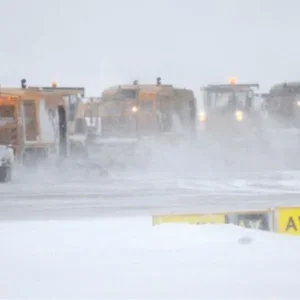Lifting a disabled aircraft is a tricky proposition. Typically requiring a combination of pneumatic lifting devices, ropes, cranes and other heavy load equipment, careful attention must be paid by airport crews to the amount of pressure placed on vehicles’ wings during the removal process. Any undue strain put upon them can do irreparable internal damage to the connective tissue between the wings and the fuselage, rendering the plane unsafe to fly in the medium to long term.
The process requires patience and specialist knowledge, something that Thomas Sefrin knows all too well. As the CEO of DARS, Sefrin has seen the firm’s trademarked Intelligent Recovery System succeed time and again in removing disabled aircraft to repair facilities carefully, efficiently and without further damaging the vehicle. It’s a journey that began at Frankfurt Airport, when Sefrin worked for the local fire service.
“I carried out a lot of fire safety and emergency courses around the world, and one part was aircraft-recovery training,” he explains. Students were taught how to correctly deploy the lifting bags – these are inflated under the wings of a stricken plane to level it gently – and the various ropes and pulleys used to raise the main body of the vehicle. Intelligent sensor mats between the lifting bags and/or trailers and the aircraft skin enabled them to monitor pressure on the wings during the entire process, but the figures they generated constantly had to be checked against official load-bearing statistics supplied in the relevant aircraft manual. It was an onerous task prone to human error. So, Sefrin automated it.
“DARS developed a sensor mat that went between the aircraft and the lifting device to measure the pressure and the figures given in the manual,” he explains. “By comparing the two, notification can be given before the aircraft is damaged.”
The technology – equipped with an external protective layer allowing operating temperatures from -30 to over 60°C – is paired with a portable recovery server that connects to DARS’ Recovery Manager Software platform via Wi-Fi. Loaded on to a rugged 11.6in tablet equipped with an LED multi-touch display that is readable in sunlight, the platform enables the user to view pre-installed information concerning skin pressure and loads during the recovery process for more than 300 military and civilian aircraft.
Clear and simple
Moreover, the software is fully compatible with Microsoft Office, and reports of the recovery process can be made easily and in accordance with current regulatory standards. All in all, the software provides a clear and simple overview of all the data necessary to conduct a safe and efficient recovery operation, with simple alerts to warn the user if any damage should occur during that process.
Sefrin is confident that no other companies operating in the aircraft recovery space are able to consult the engineering manuals nearly as well as DARS’ Intelligent Recovery System. Too often, he has seen operators move stricken aircraft without fully realising the amount of damage they’re causing. It’s an important moment for airport operators at large seeking to reduce the exposure to liabilities in this area, even if the damage to the vehicle is not visible on the day.
“[Frequently] nobody is aware of it,” explains Sefrin. “The structure inside is damaged, and during flight that damage only increases. It may not happen tomorrow, but perhaps in six months, or even two years, something will happen to that aircraft, and nobody wants to take that liability on.”
New IATA regulations advise that any ground support equipment that touches an aircraft requires a system that records the forces being placed on it, so DARS designed its sensor mat to record whatever is done to the aircraft.
“After the technology was explained to a major German insurance company, it started advising its clients to use DARS Intelligent Recovery System, as it is also mentioned in the aircraft recovery manuals,” says Sefrin.
DARS also offers training courses to clients eager to train staff in the recovery of disabled aircraft. The firm retains mock-ups of passenger planes similar in shape and weight to the Airbus A320 passenger plane at two major airports in Germany. “With these, we can simulate all recovery scenarios,” explains Sefrin.
Staff at DARS are also ready to ship out equipment to airports eager to remove stricken aircraft from their premises at a moment’s notice. This, of course, is a service that remains exclusive to paying clients. DARS’ services are especially in demand when unprepared airports need to recover aircraft.
“If you don’t have a contract with DARS and its airport partner, there are a lot of administrative issues that the company will have to contend with that it will have no prior knowledge of,” says Sefrin. “It costs a lot of money to rent and fly out an aircraft, and bring the equipment from A to B. If DARS does not know the client, and no contract has been signed, nobody can jump up at 3am to procure the necessary equipment.”
For those clients that enlist DARS’ services in advance, the firm is able to share an equipment pool worth up to millions of euros. “We have received service request from airports, major airlines, armed forces around the globe and even from aircraft manufacturers,” adds Sefrin.
DARS’ CEO is eager to incorporate even more automated elements into its recovery services. Sefrin predicts a time when computers can shoulder the burden of many of the decisions that need to be taken by an on-site engineer during an aircraft recovery operation. It’s a vision, he says, that’s entirely in keeping with his company’s core vision for its clients: “DARS wants to make aircraft recovery as safe and easy as possible.”
DARS’ website (below) contains a link to software that demonstrates the system’s performance.






